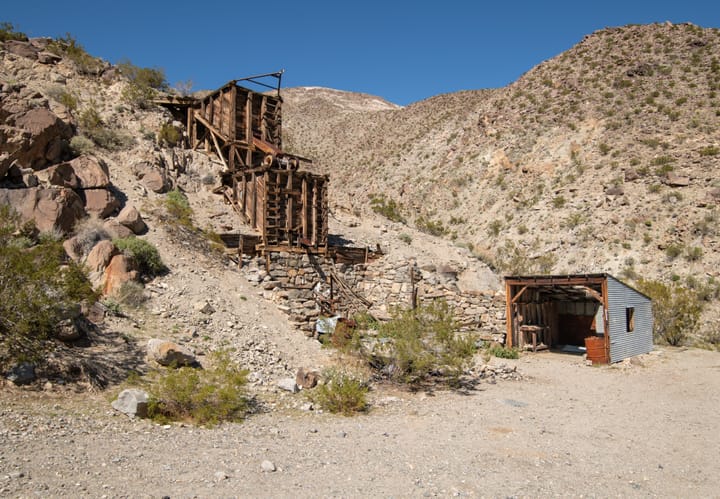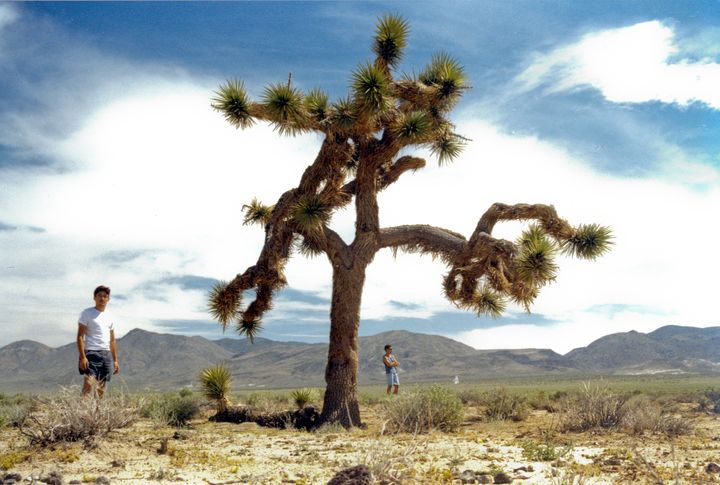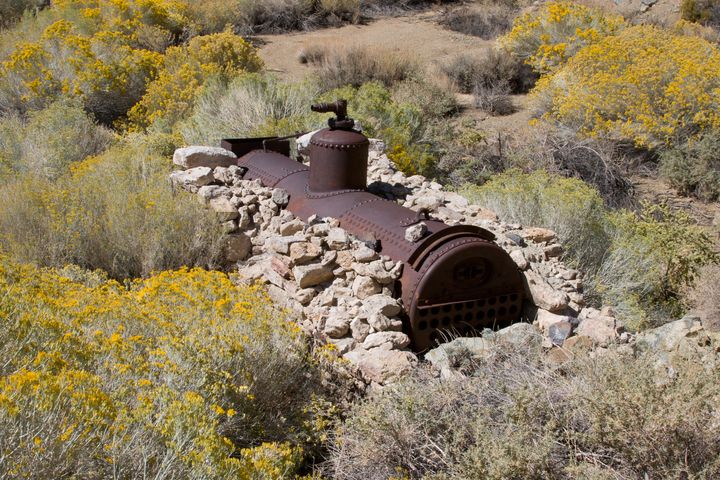Nestled high in the mountains above Barstow, Newberry Cave sits quietly and unassumingly. Caves and pictographs are both rare in the Mojave Desert; this is a unique and amazing place.
The cave was first discovered by locals in the 1930s but wasn’t excavated until 1953 by Dr. Gerald Smith, working with the San Bernardino County Museum. They found atlatl shafts, projectile points, sandals made from willow and juniper bark, cordage, fire drills, quartz crystals painted green, and stone tools. They also found five figurines of deer or bighorn sheep made from willow and sticks. Miniature spears pierced the figurines. It is suspected they were used in rituals promoting a successful hunt. The figurines have been carbon dated to 3,000 to 4,000 years ago.
The cave also holds a unique set of green, white, red, and black pictographs. The green pigment is unknown elsewhere in the Mojave Desert and probably was made from the mineral celadonite, which is found close by. This style of pictographs is also not seen anywhere else. They have been protected from the weather for thousands of years in the shelter of this little cave.

On our way to look for Newberry Cave, we made a little side trip to take a look at a small panel of Archaic petroglyphs that we had learned about. It is possible they were made by the same people who created the pictographs in the cave.
I’m not giving directions to this site. If you decide to try and find the cave, be prepared; hiking involves route finding over rough and steep terrain. Please respect it and take great care with its features. Obviously, it is illegal to deface or remove any artifacts. Protect and honor our heritage.



